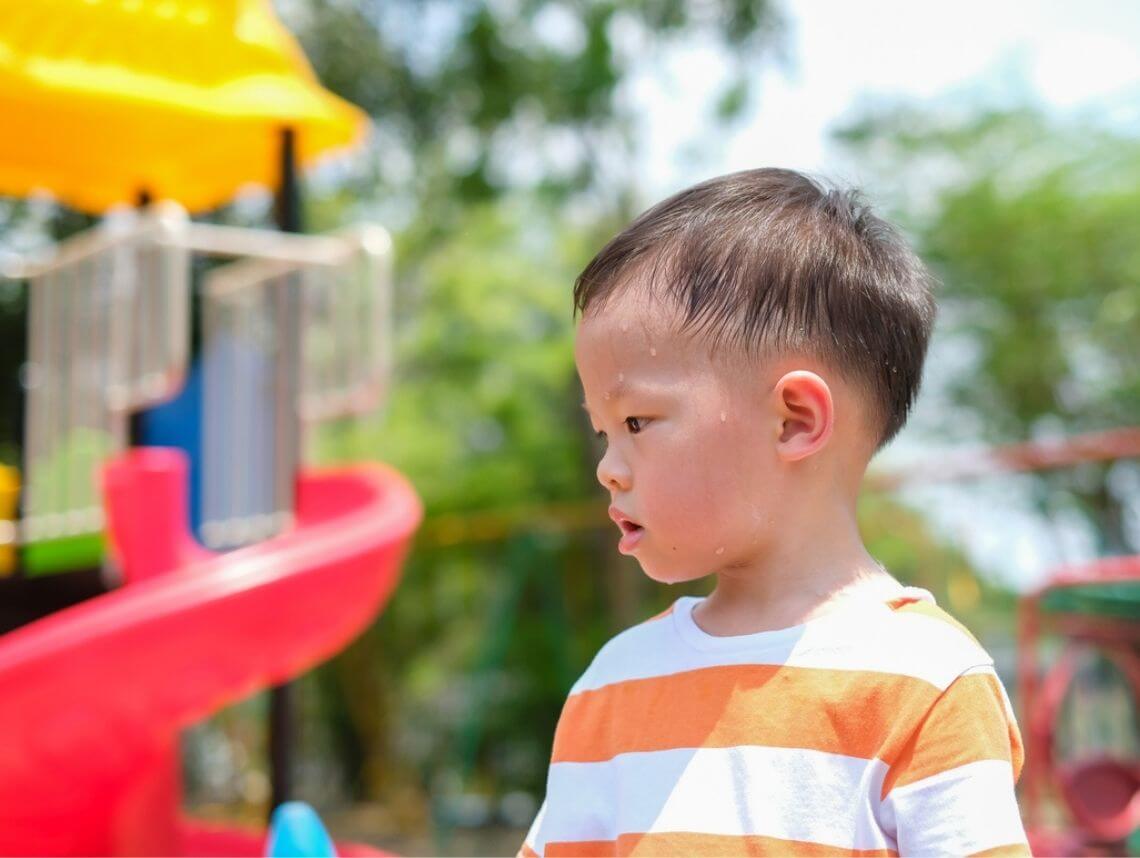
If you’ve lived in Florida long enough, you’re aware that the heat and humidity can sometimes feel oppressive. This is not limited to the summer months, either. Thanks to our quasi-tropical location, temperatures can be high for most of the year. Yet, it is these same weather conditions that make the Sunshine State a popular place for outdoor activities — such as picnics, visits to amusement parks, and playing sports. But, how do you know if your child is experiencing an ordinary hot day or if they’re on the verge of heat exhaustion or heatstroke? What are the signs? And, how can you treat them?
What is heat exhaustion?
Heat exhaustion is when the pulse quickens and your child sweats profusely as a result of their body overheating. While it could happen anywhere with high temperatures, it’s more likely to occur in places where there is also high humidity. The risk increases if the child is doing strenuous physical activity. Heat exhaustion should be taken seriously, since, left untreated, may lead to heatstroke — which can be life-threatening.
Signs of Heat Exhaustion in Children
The symptoms of heat exhaustion may vary from child to child. However, they have several common denominators. The most common ones include:
- Excessive sweating
- Cold, pale, and clammy skin
- Rapid, weak pulse
- Dizziness
- Headaches
- Nausea or vomiting
- Muscle cramps
- Tiredness or weakness
- Fainting
How To Treat Heat Exhaustion in Children
If your child experiences any symptoms of heat exhaustion while outside, have them stop all physical activity. Make them drink cool water or sports drinks, take electrolytes or salt tablets, and move them either to the shade or to an air-conditioned area.
What is heatstroke?
Heatstroke occurs when the child’s body temperature reaches 104 F (40 C). If not treated immediately, it could result in permanent brain damage — as well as damage to vital organs, such as the heart and kidneys. It can also lead to death.
The risk of heatstroke is higher in children who are exerting themselves physically in the heat, obese children, and those who are taking certain medications. If any of these conditions apply to your child, make sure they always stay hydrated. If they will be exercising for longer than an hour, ensure they have electrolytes. Also, apply sunscreen and have them wear light clothing. And finally, never leave them waiting in a parked car without air conditioning.
Signs of Heatstroke in Children
The symptoms of heatstroke in children are very obvious and should be taken seriously from the moment you first notice them. They include:
- Flushed skin — hot, red, dry, or damp
- High body temperature (103 degrees or higher)
- Confusion
- Slurred speech
- Rapid breathing
- Fast, strong heart rate
- Headache
- Dizziness
- Vomiting
- Delirium
- Passing out
- Possible seizures
If your child is experiencing heatstroke, call 911 immediately. Remove excess clothing, move them to a shady area if possible, and cool them down with whatever means are available — a water bottle, wet clothing, water sprinklers, etc.
Contact Care Options for Kids for Home Health Care
It can be hard to balance your time between work, home, and caring for a child. That’s why our team of professionals at Care Options for Kids is here to help.
Our home health care services offer support in the comfort of your home. We refer loving and competent nurses to provide customized care for families — from a few hours a day to around-the-clock supervision. Contact us directly to speak with a home health care professional or request a free in-home assessment. Together we can determine the best plan of action to keep your loved ones happy and healthy.
If you or a loved one are considering Pediatric Home Health Care Services, contact the caring staff at Care Options for Kids. Call today at (888) 592-5855.
